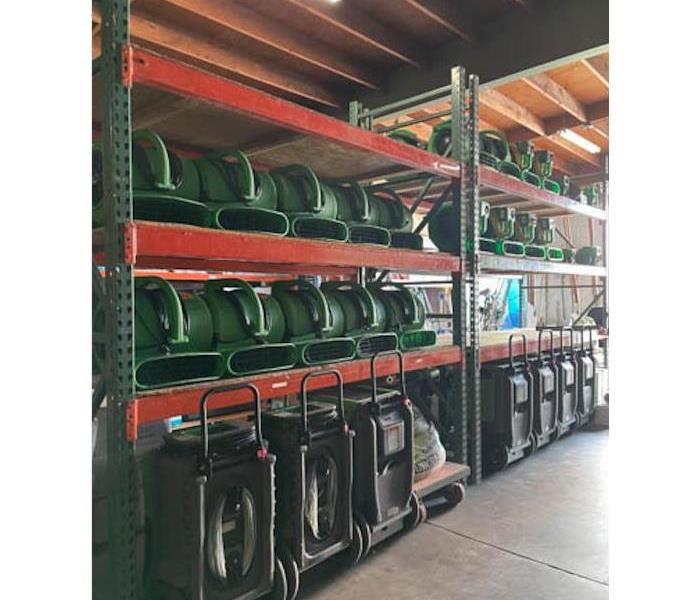What is the Process of Water Cleanup and Restoration?
9/23/2022 (Permalink)
 If you’re trying to make sense of water cleanup, the process can seem overwhelming. But don’t worry—there are professionals who can help you!
If you’re trying to make sense of water cleanup, the process can seem overwhelming. But don’t worry—there are professionals who can help you!
If you've ever been through a water loss, you know how stressful it can be. You need to deal with insurance companies and contractors, leaving you without the time or energy to manage all of the emotional aspects of dealing with such an event. What's worse is that most people don't really understand the process of water damage restoration until they've experienced it firsthand—and even then it can seem overwhelming! If this describes your situation, read on for a crash course in understanding what happens when your home is damaged by flooding or some other form of a water disaster.
Assess the damage
Water cleanup and restoration begins with assessing the damage and deciding what can be restored. If you are not sure, it's better to contact a professional rather than risk making the situation worse.
Don't underestimate water damage—even if your home doesn't look like it sustained much damage, there could still be hidden issues lurking beneath layers of flooring, insulation, and drywall that need addressing before you move back in.
A reputable restoration company will be able to assess all aspects of your property so they can determine which areas need immediate attention and which ones can wait until after other repairs are made or purchased items have been replaced.
Extract and dry
Extraction is the next step in water cleanup. Water extraction removes water from your home, which allows for faster drying and helps prevent mold growth.
It's important to extract both liquid and water-soaked materials so they can be properly dried out of the air with dehumidifiers. If you have mold or mildew growing on these items, you'll need to clean them separately using an antimicrobial cleaner or disinfectant solution before drying them thoroughly in a well-ventilated area (such as outside).
A wet/dry vacuum is used to remove liquid from carpets, rugs, walls, furniture, and similar items—but it's not always effective at removing all traces of moisture from hard surfaces like wood floors or drywall because it doesn't reach into crevices or corners very well without causing damage to those surfaces themselves.
Cleaning and sanitizing
Next, it is time for cleaning and sanitizing. This process includes removing items that can't be salvaged, cleaning walls and floors, and disinfecting every surface.
The water cleanup and restoration process is a must for any homeowner who has experienced water damage to their home or business property. It's important to understand that this type of cleanup involves professional services from experts with experience in the industry - such as SERVPRO of Northern Colorado Springs/Tri-Lakes.
Restoration
Restoration is the final stage, and it involves returning your home to its pre-disaster condition. Depending on the extent of damage and the type of restoration needed, this can take time. Restoration does not necessarily mean repair or rebuilding; it means bringing back what was lost or damaged through cleaning, repairing, and replacing damaged building materials. A professional flood restoration company like SERVPRO will be able to determine how much work is necessary for your home and guide you through the entire process, from drying out your belongings with dehumidifiers to replacing flooring, drywall, and other affected areas in your home with new ones that match perfectly.
Understand the process to know what to expect when dealing with it.
When you’re dealing with a water emergency and need help, it’s important to understand what to expect from the cleanup process. According to the Environmental Protection Agency (EPA), most companies that specialize in water damage restoration have crews that work 24/7 during emergencies like yours. This means you won’t have to wait long before they arrive at your home or business.
If you’re trying to make sense of water cleanup, the process can seem overwhelming. But don’t worry—there are professionals who can help you every step of the way. They’ll be able to assess your situation, extract and dry out any remaining moisture from your home or business, and clean and sanitize everything from walls and floors to high-risk surfaces like carpeting or furniture before restoration begins. Don't wait until it's too late; contact us today!

 24/7 Emergency Service
24/7 Emergency Service